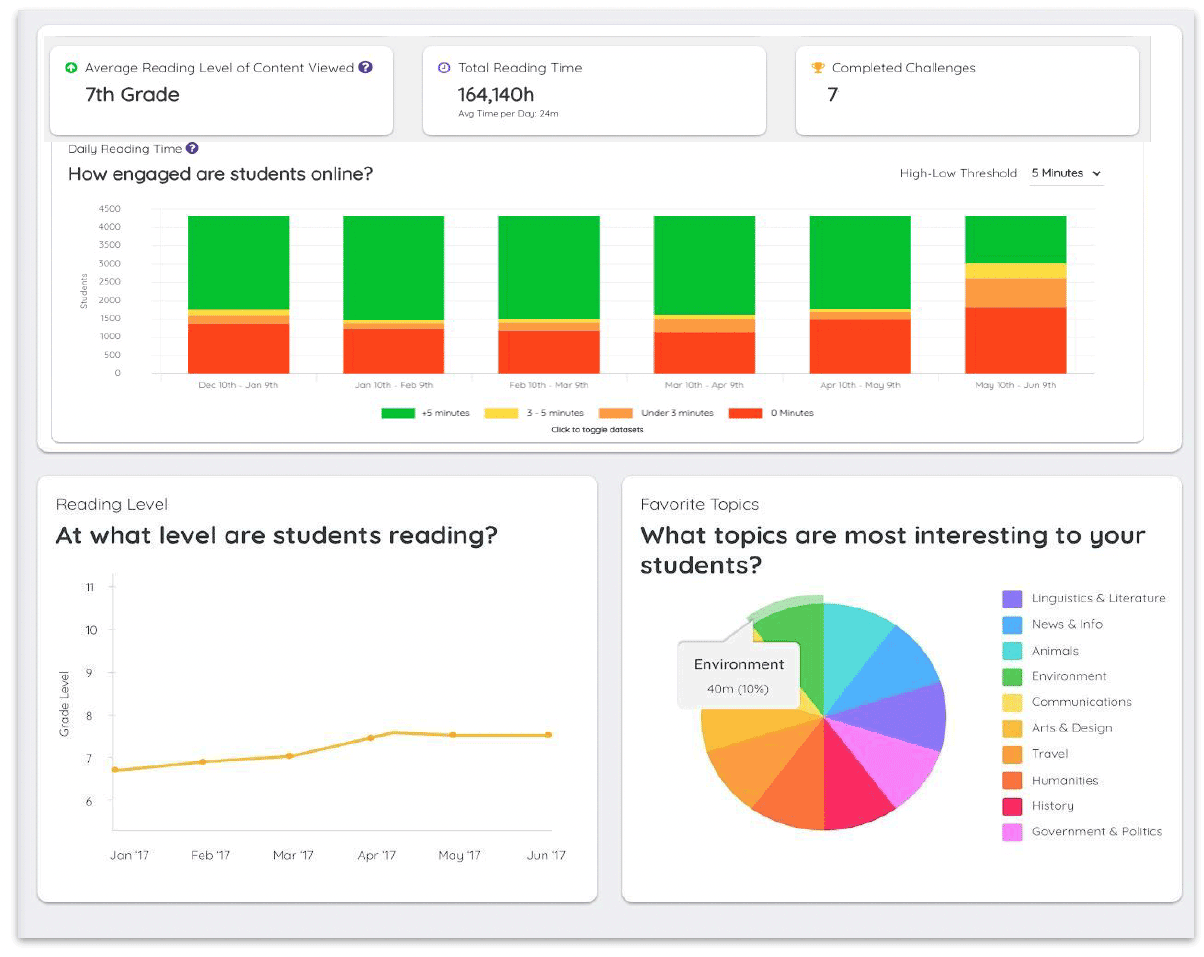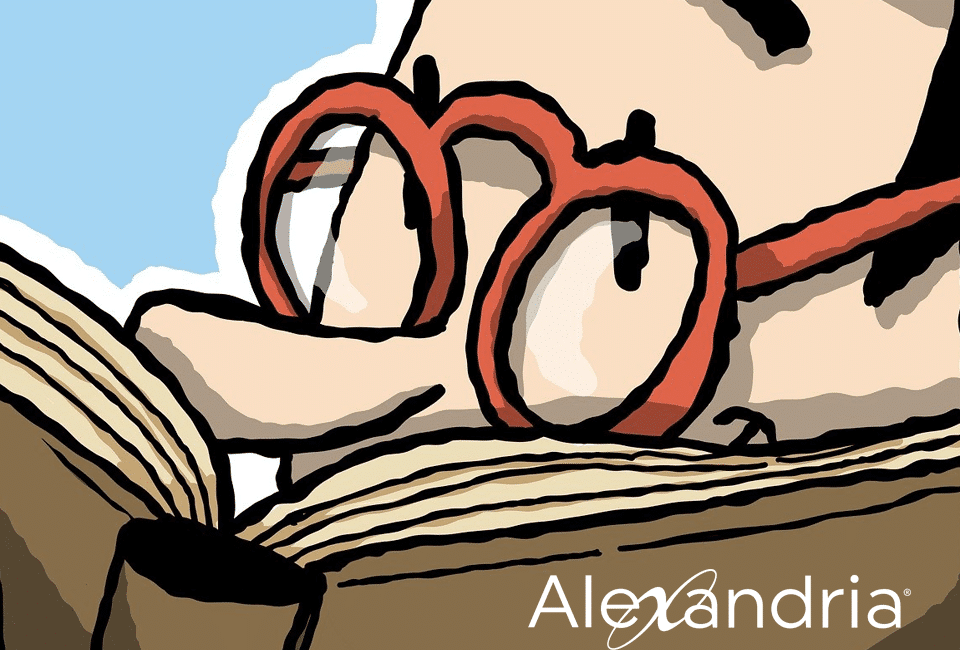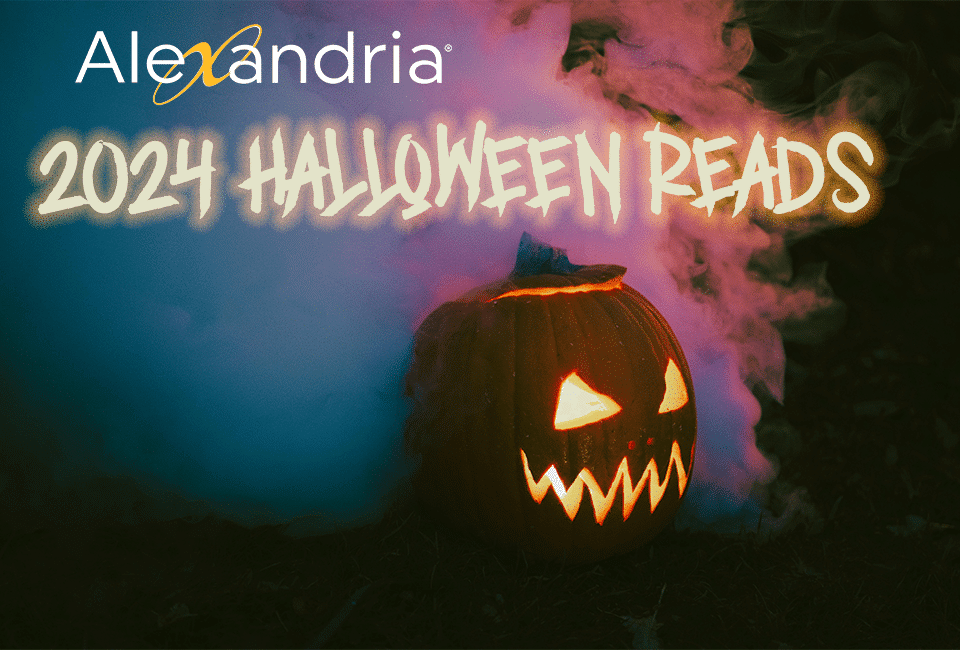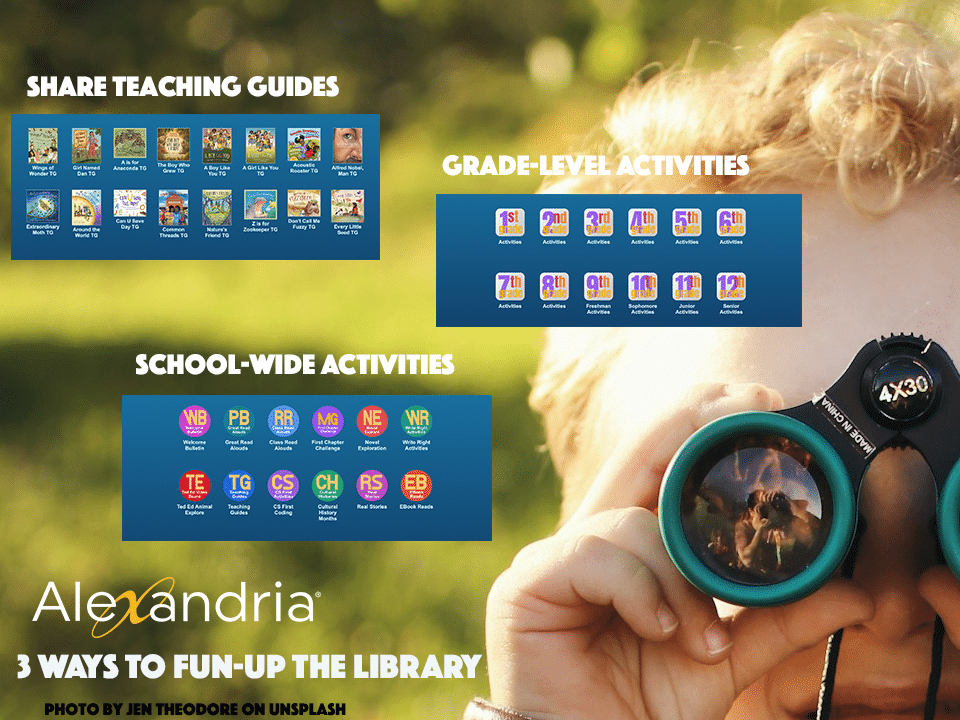Holiday Posters for 2021
December 6, 2021January Favorites
January 11, 20227 Picture Books to Read Aloud and Share on Alexandria’s Bulletins
by Jo Sadler, Alexandria's Virtual Librarian
THE BEST PART OF SERVING AS A LIBRARY MEDIA SPECIALIST OR LIBRARY DIRECTOR is the fun of sharing books and words and ways to become better readers and writers with kids. But it’s a struggle, with so many books, to select that just-right book to share. I tend to lean toward sharing books with a whole-school approach and stand out qualities that make learning targets easy to accomplish. Then, thanks to Alexandria’s Bulletins, it’s easy to share a story, share a learning target, and a grade-level challenge for students. Below are some great books I recommend and how to share them inside the Alexandria Library platform.
We Don't Eat Our Classmates (2018) by Ryan T. Higgins
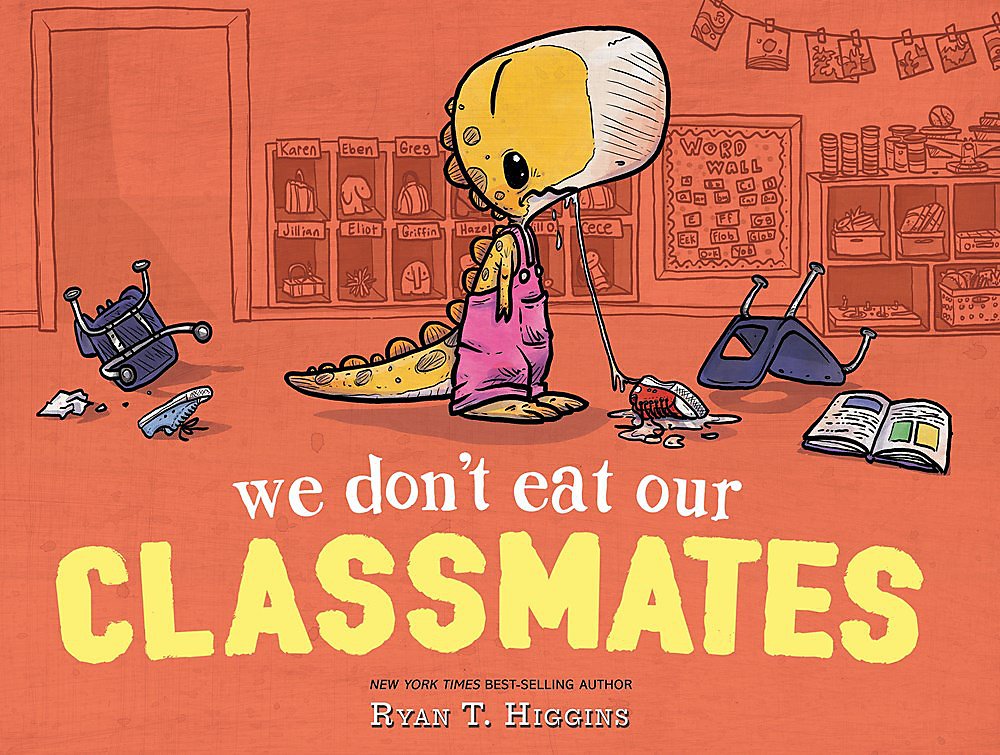
Learning Targets: I can identify the MAIN STORY PROBLEM and talk about how Penelope learned to be a friend who no longer eats her classmates.
Discussion: How do we know that Penelope is scared about going to school? What was the big surprise to her when she arrived? What was the problem: What could Penelope NOT stop doing? And what "little" help did she have in remembering that eating her classmates was NOT a nice thing to do?
Shark Lady, The True Story of How Eugenie Clark Became the Ocean's Most Fearless Scientist (2017) by Jess Keating, Illustrated by Marta Álvarez Miguéns
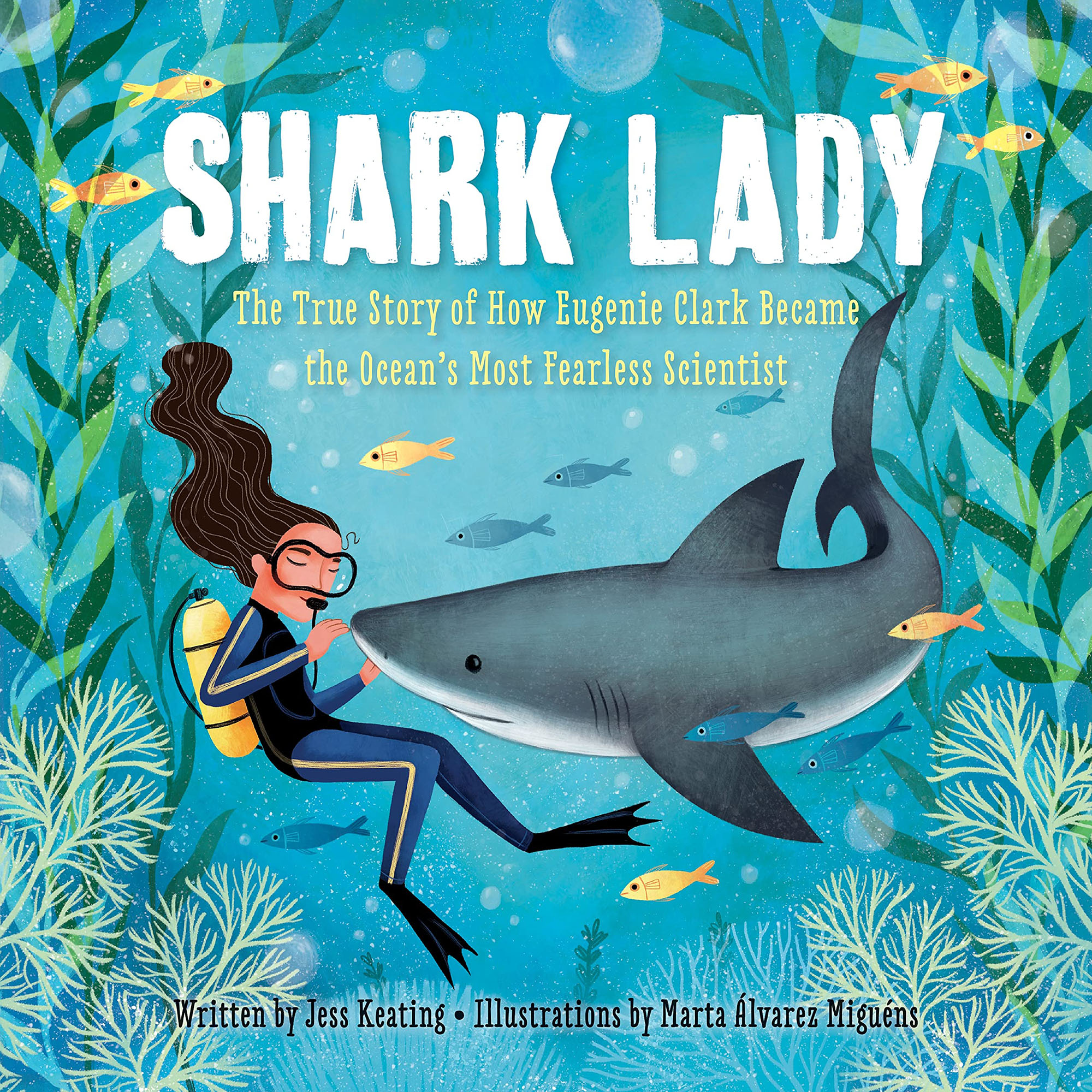
Learning Targets: I can consider the verb: "DOVE" and its various meanings. This story REPEATS "Eugenie dove..." throughout this story. Does it always mean she plunged into water? If not, what else did Eugenia dive into?
Discussion: What was this story about? What did Eugenie learn about sharks that no one else knew?
Little Lunch Truck (2021) by Jess Keating
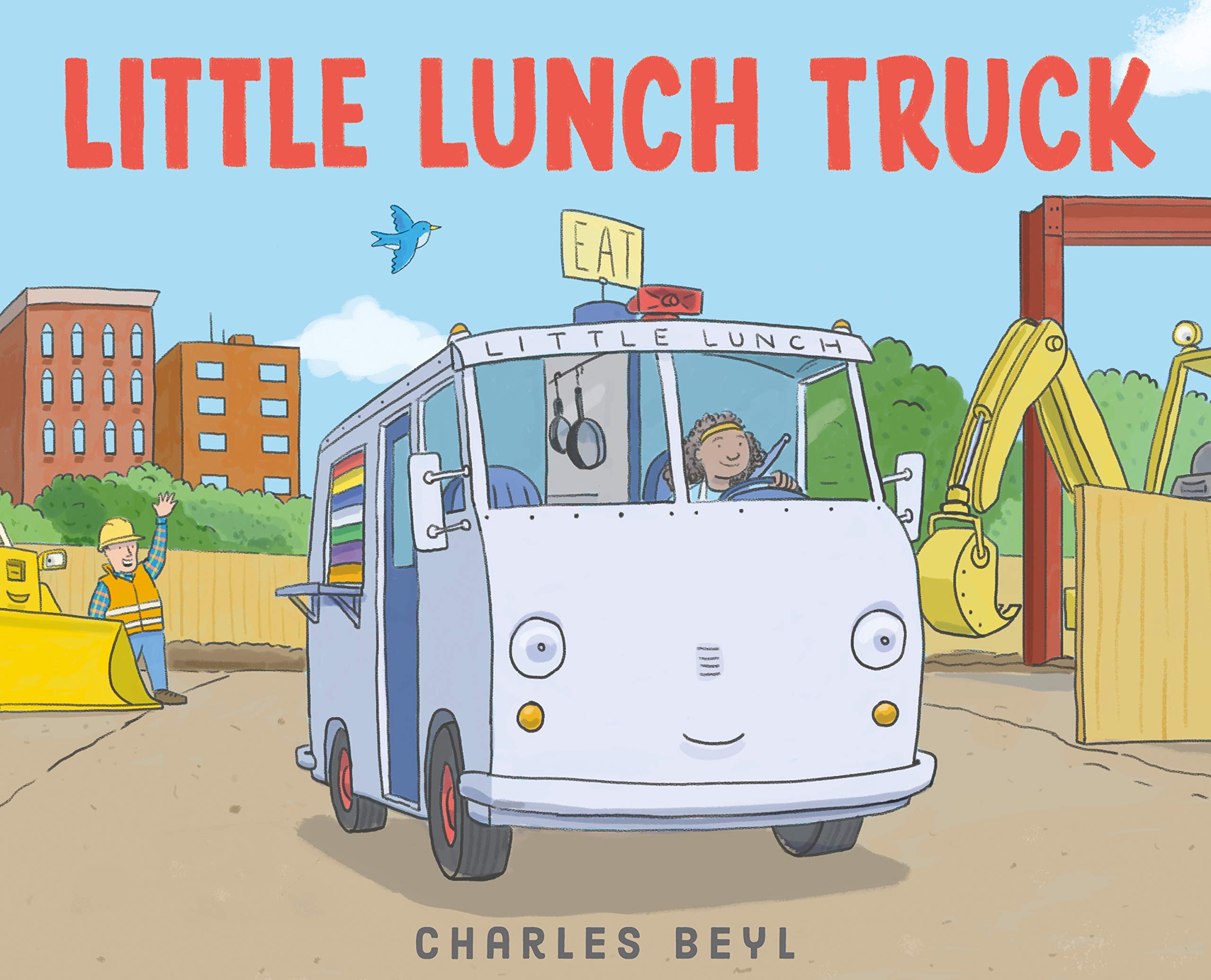
Learning Targets: I can identify ONOMATOPOEIA, REPETITION, and VISUAL IMAGERY in this book.
Discussion:
This book uses ONOMATOPOEIA to show how noisy the big and busy trucks are on the job! Invite students to wave their fingers anytime they hear a word that represents a sound.
When Little Lunch Truck sees each truck doing as it passes it by on the construction site, the name of the truck repeats. Why do you think the author uses REPETITION like this? (Allow for a few guesses and discussion.) Yes. The author uses repetition to alert the reader to something important in the story.
The author uses OBJECTS, or VISUAL IMAGERY, to share how little lunch truck feels. In the Town scene as "Chef Nina drives quietly toward the construction site," how does the author share what Little Lunch Truck might be feeling about his first big day? Do you ever feel this way?
Mogie, The Heart of the House (2014) by Kathi Appelt, Illustrated by Marc Rosenthal
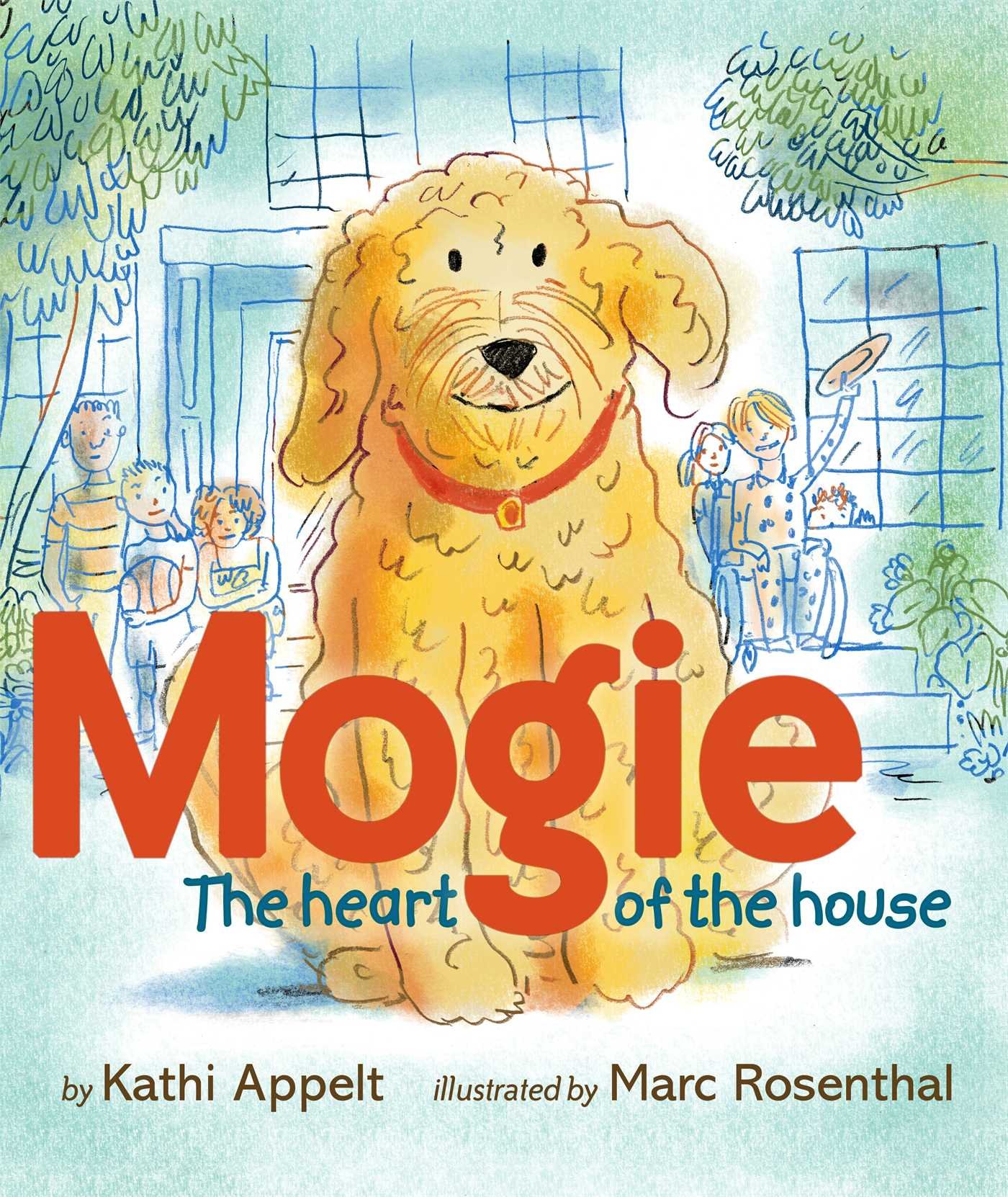
Learning Targets: I can talk about the author's use of THREES (3) and how it adds RHYTHM to the writing. I can talk about the story problem of becoming a service dog and how Mogie, at first, failed, but ultimately became a service dog by following his heart to help a new friend, Gabe.
Discussion: What THREE tests did Mogie fail at? What was the Special House in the Heart of the City? What were the RULES there and who broke the RULES? Why was Gabe at this Special House? Did Mogie help him? What did Mogie ultimately become? What kind of service dog?
BRAINS! Not Just A Zombie Snack (2021) by Stacy McAnulty, Illustrated by Matthew Rivera.
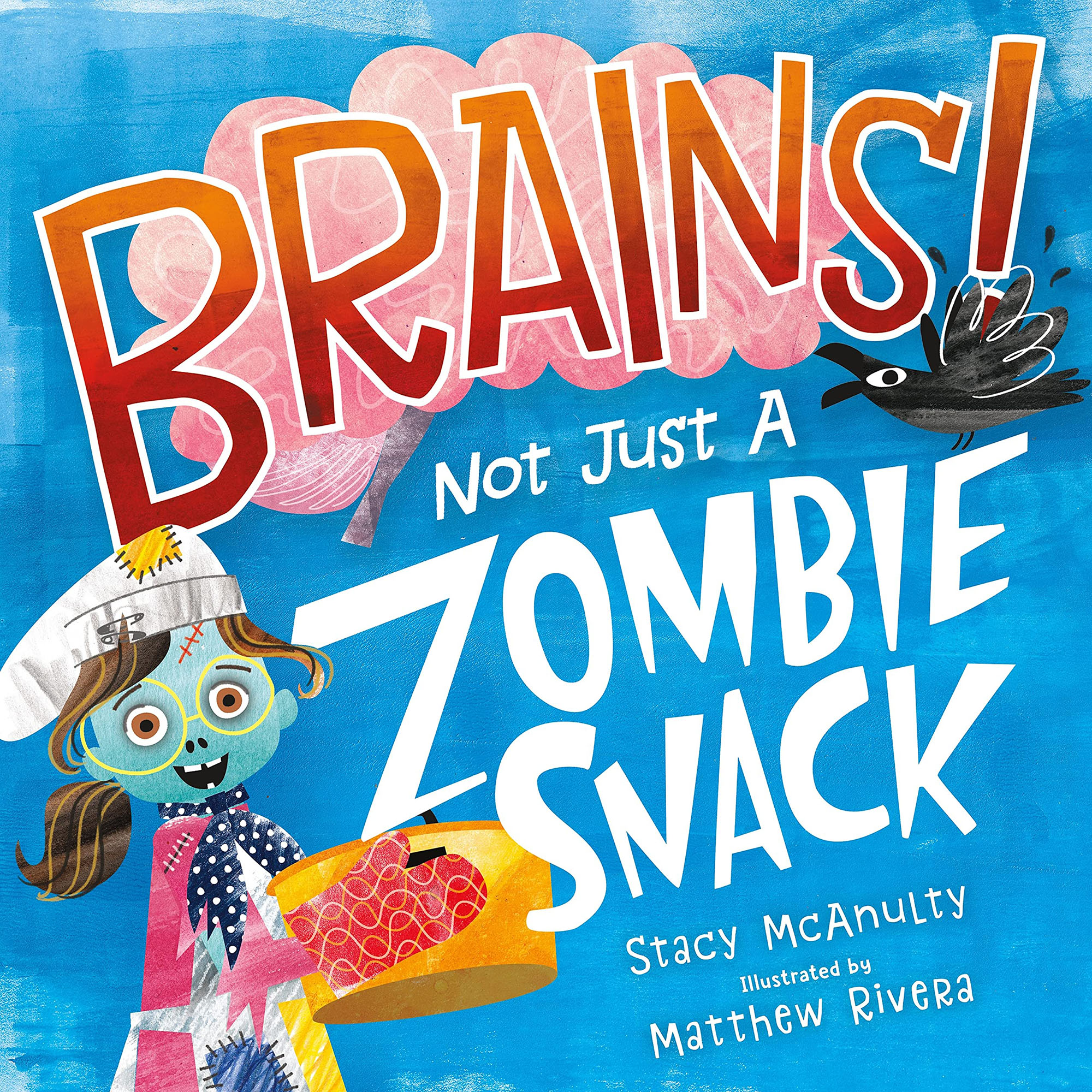
Learning Targets: I can identify important parts of the brain: cerebellum (balance), brain stem (breathing and all things), and know how much the brain weighs in an adult: (3 lbs), newborn (1 lb), and 1-year-old (2 lbs), as well as other creatures like the Sperm Whale (17 lbs), Elephant (11 lbs), and Tiger (0.5 lbs).
Discussion: What was this story about? How many Neurons and Glial Cells do we have in our brains? (86 Billion.) How do they work together as we learn new things like writing and fighting zombies? (Create new pathways.) What do the wrinkles in our brains tell us? (How smart we are.) Less-smart animals (mice) = smoother brains; smarter animals (dolphins) = wrinklier brains.
Trout Are Made of Trees (2010) by the late April Pulley Sayres, Illustrated by Kate Endle
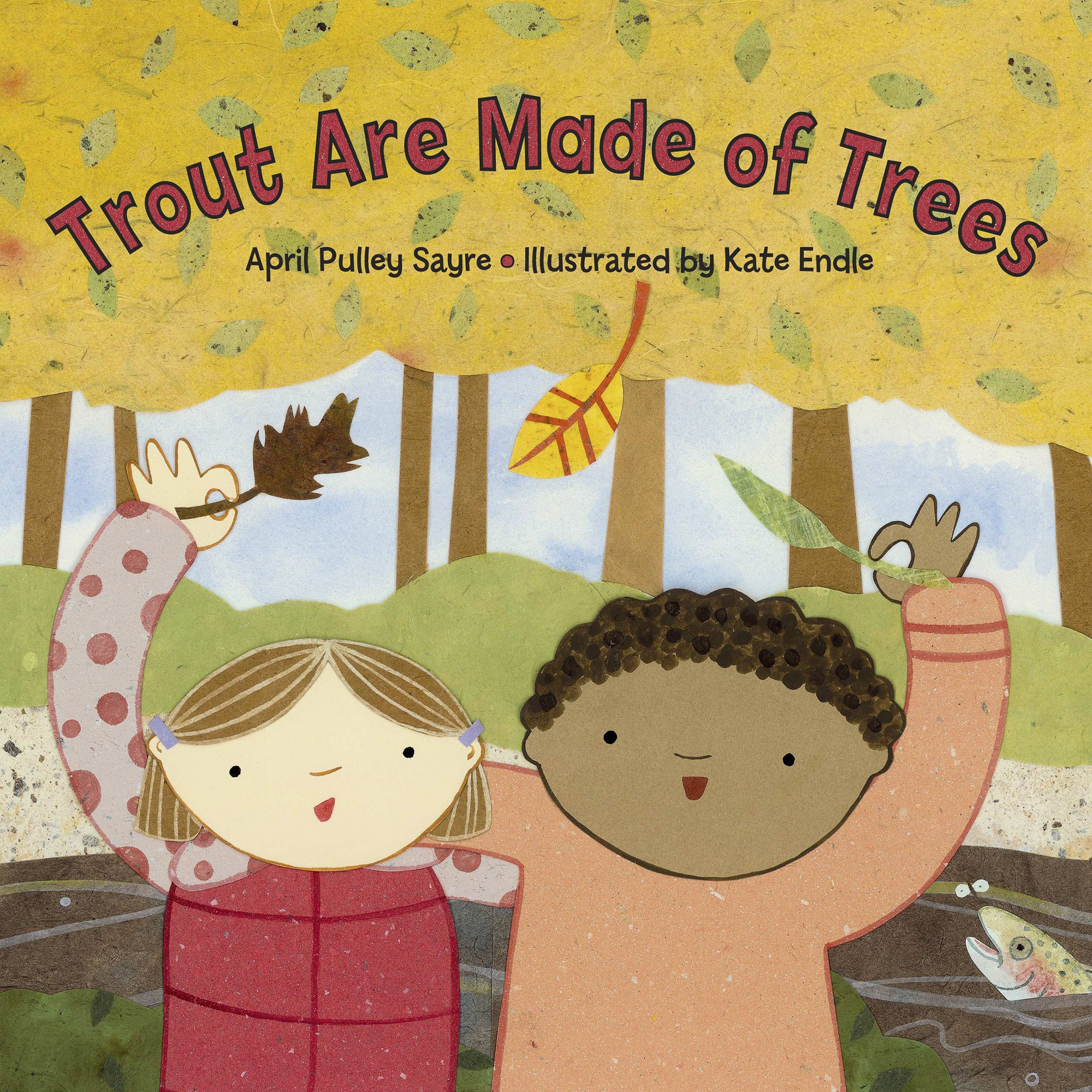
Learning Targets: I can identify ALLITERATION, name the initial letter, and its repetitive letter sound. The story reads, "In fall, trees let go of leaves, which swirl and twirl and slip into streams." What's the dominant letter and letter sound? Gamify this read: Invite readers to alert you when they see an example of ALLITERATION on the page, doing a goofy thing like Touch Finger to Nose or Grow Antlers.
Discussion: Why does Ms. Sayres say that Trout are made of trees? What else is made of trees?
Brave Girl, Clara and the Shirtwaist Maker's Strike of 1909 (2013) by Michelle Markle, Illustrated by Melissa Sweet
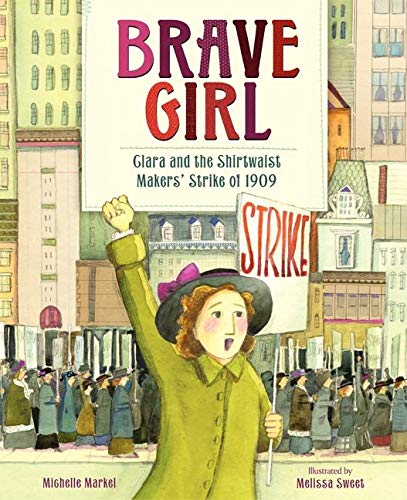
Learning Targets: I can identify and recall DETAILS in the story. I can use three details to summarize some of the struggles Clara faced? What three (3) details stand out most to you? What makes them stand out?
Discussion: Why does the author call Clara a brave girl?
The Next Best Part
Sharing and reading typically go on inside the library. Students come and go and it feels like a solo endeavor. However, what if there was a way to share with other teachers and parents and spread the joy of reading—right inside Alexandria?
The good news?
There is.
You can share your read aloud schoolwide using Alexandria’s Bulletin Boards. It’s an ideal place to share information, books, or even collaborate with colleagues on assessments and lesson plans.
Here's how:
Go to TOOLS – then, BULLETIN BOARDSCreate a Bulletin name: 7 Great Picture Books. I will share these same books, learning targets, and discussion activities on my bulletin boards, which will allow all teachers in the district access to the material.
I then click SAVE and begin to code the first book’s Bulletin Board: Little Lunch Truck. I add the image by simply dropping an image into the space provided, and then add the text. I add simple codes for bold:
<b>"Text"</b>and codes for line breaks to make it more readable:
<p> copy </p>and click save again. Bulletin one is done.
Here’s what the code looks like:
<b>Call Number: P BEYL (P Picture Book Fiction, Author Last)</b> <p>Learning Targets: I can identify <b>ONOMATOPOEIA, REPETITION, and VISUAL IMAGERY</b> in this book.</p> <p>Discussion: This book uses <b>ONOMATOPOEIA</b> to share how noisy the big and busy trucks are on the job! Invite students to wave their fingers anytime they hear a word that represents a sound. </p>
Notice how similar it is to the original copy (shown above). The Bulletin Board Result is shown below
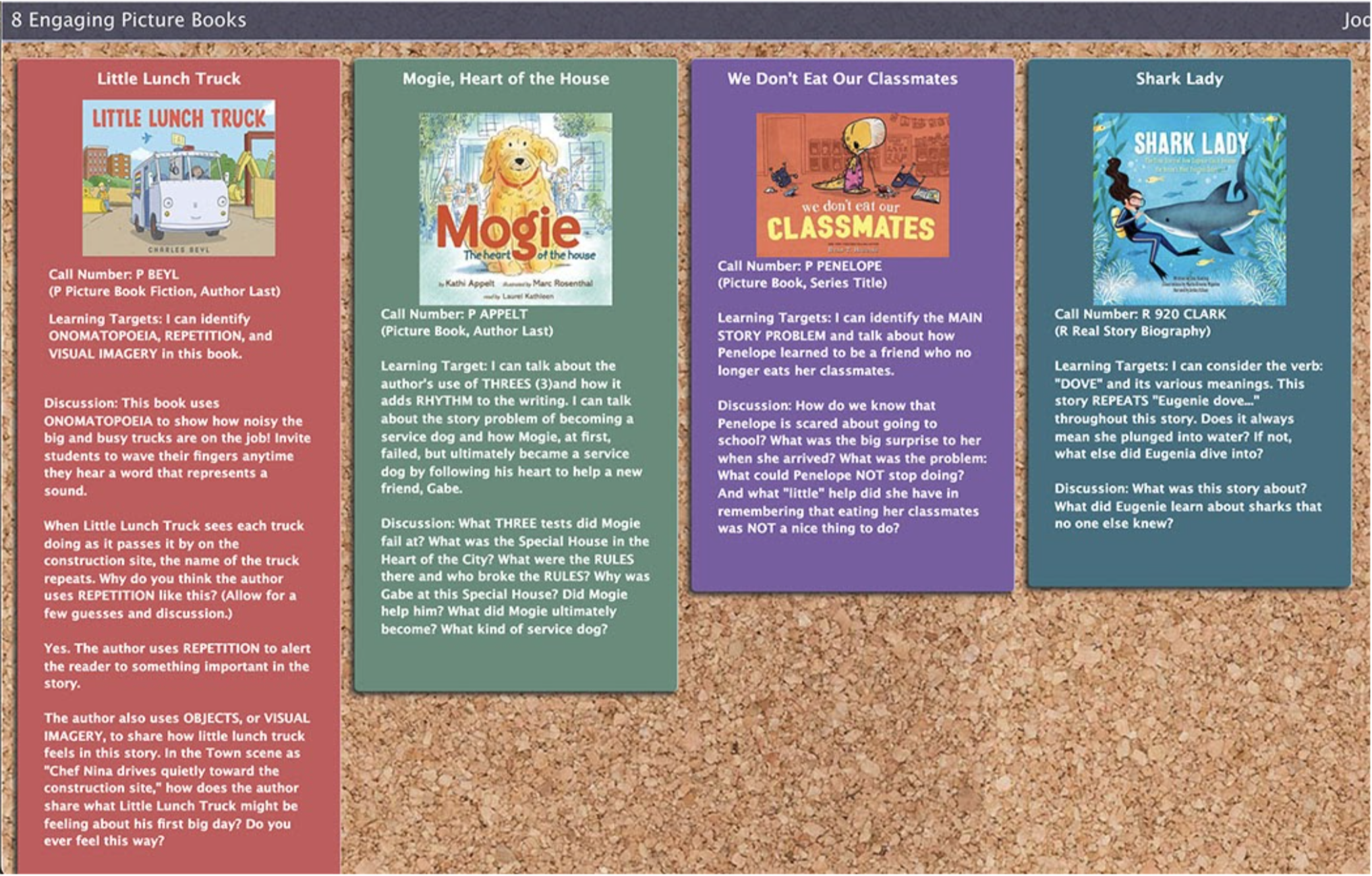
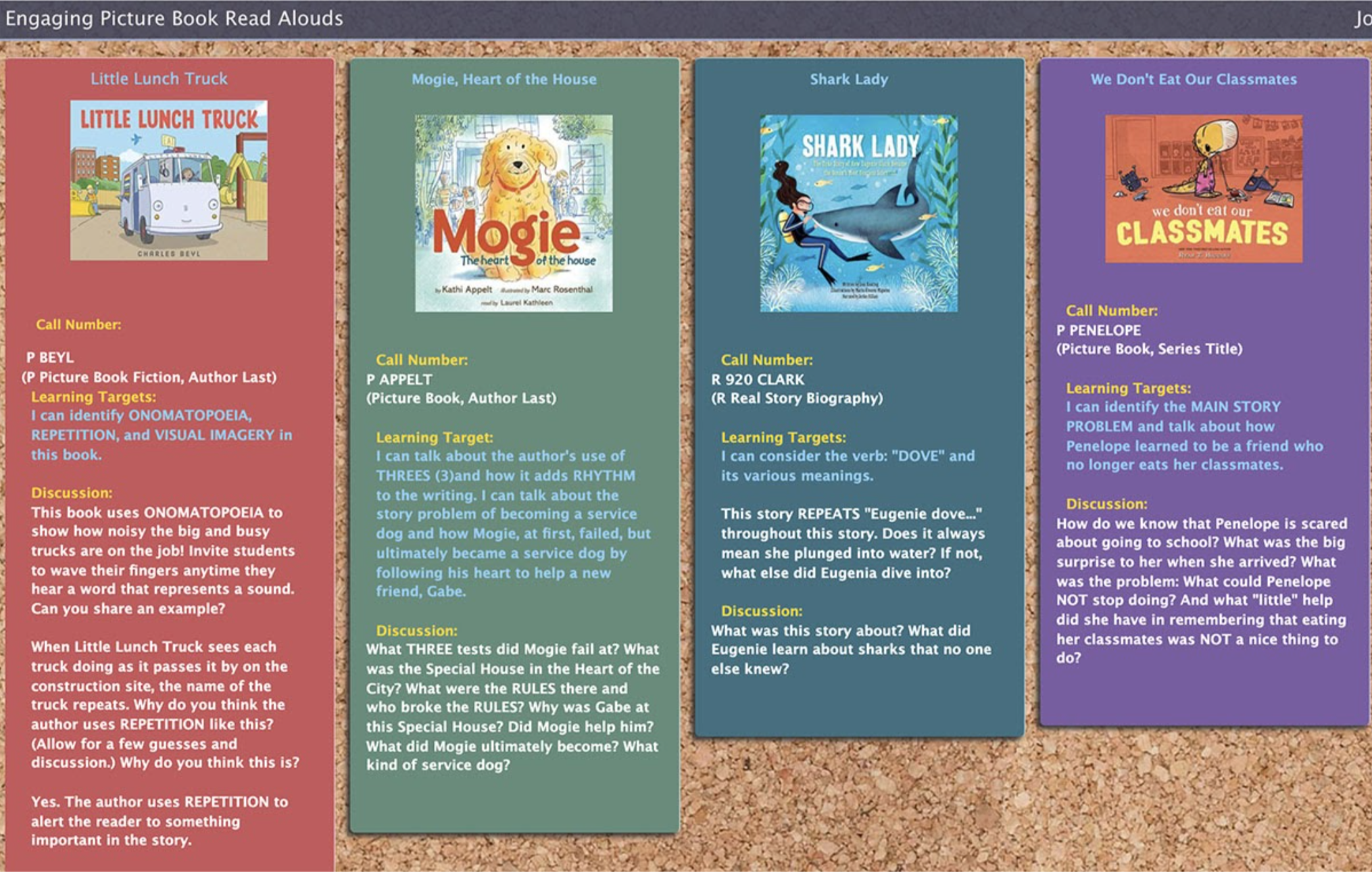
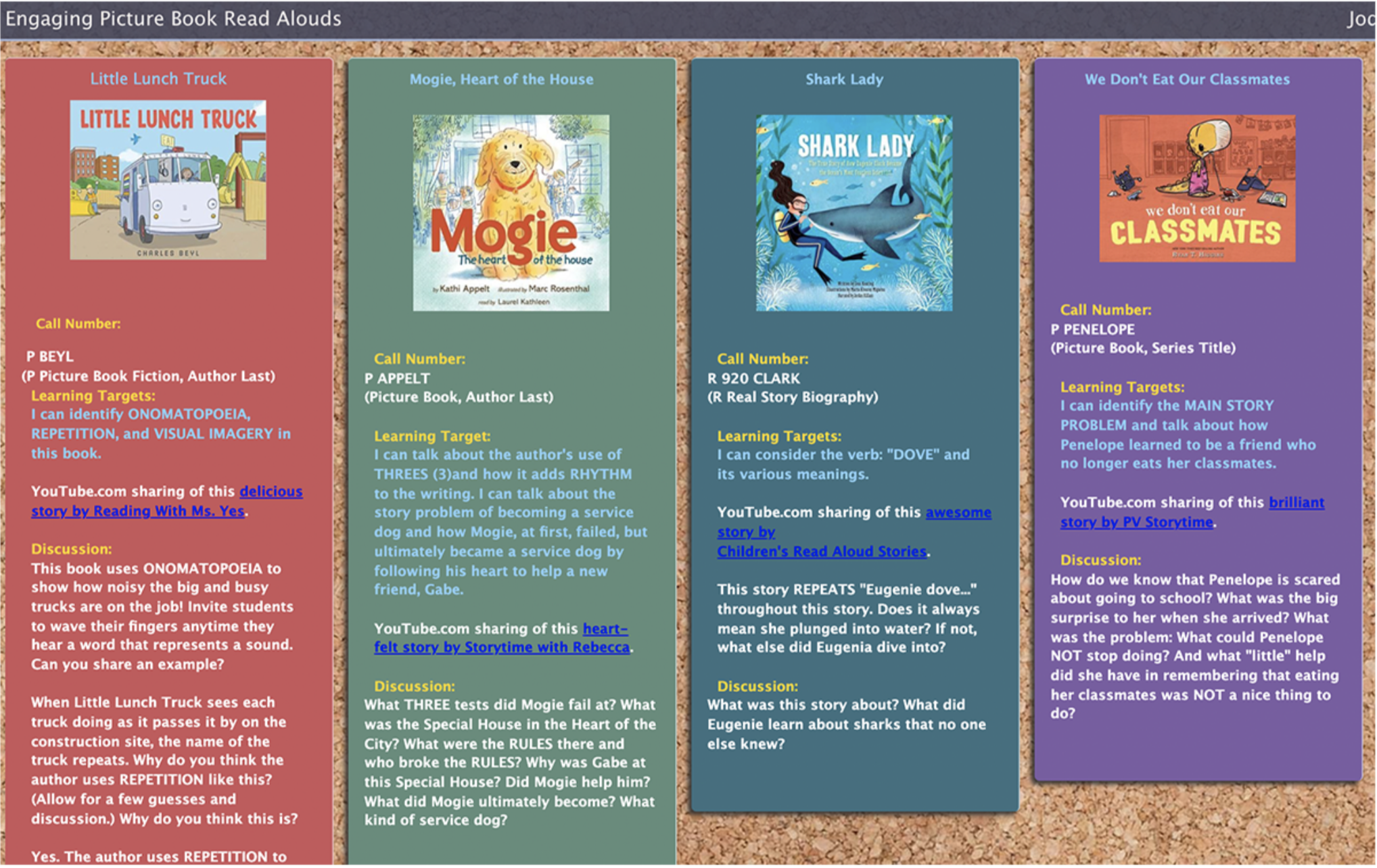
<p>YouTube.com sharing of this <a href="https://youtu.be/N8gczn1bGig">delicious story by Reading With Ms. Yes</a>.</p>
Once you get coding, you will find brilliant new ways to connect and collaborate books in your library. Try it out for yourself. If you need help with this activity, register for a personal Alexandria chat or sign up for our Bulletin Board Webinar. We’d love to help.
Click here for the full list of HTML tags we recommend.
